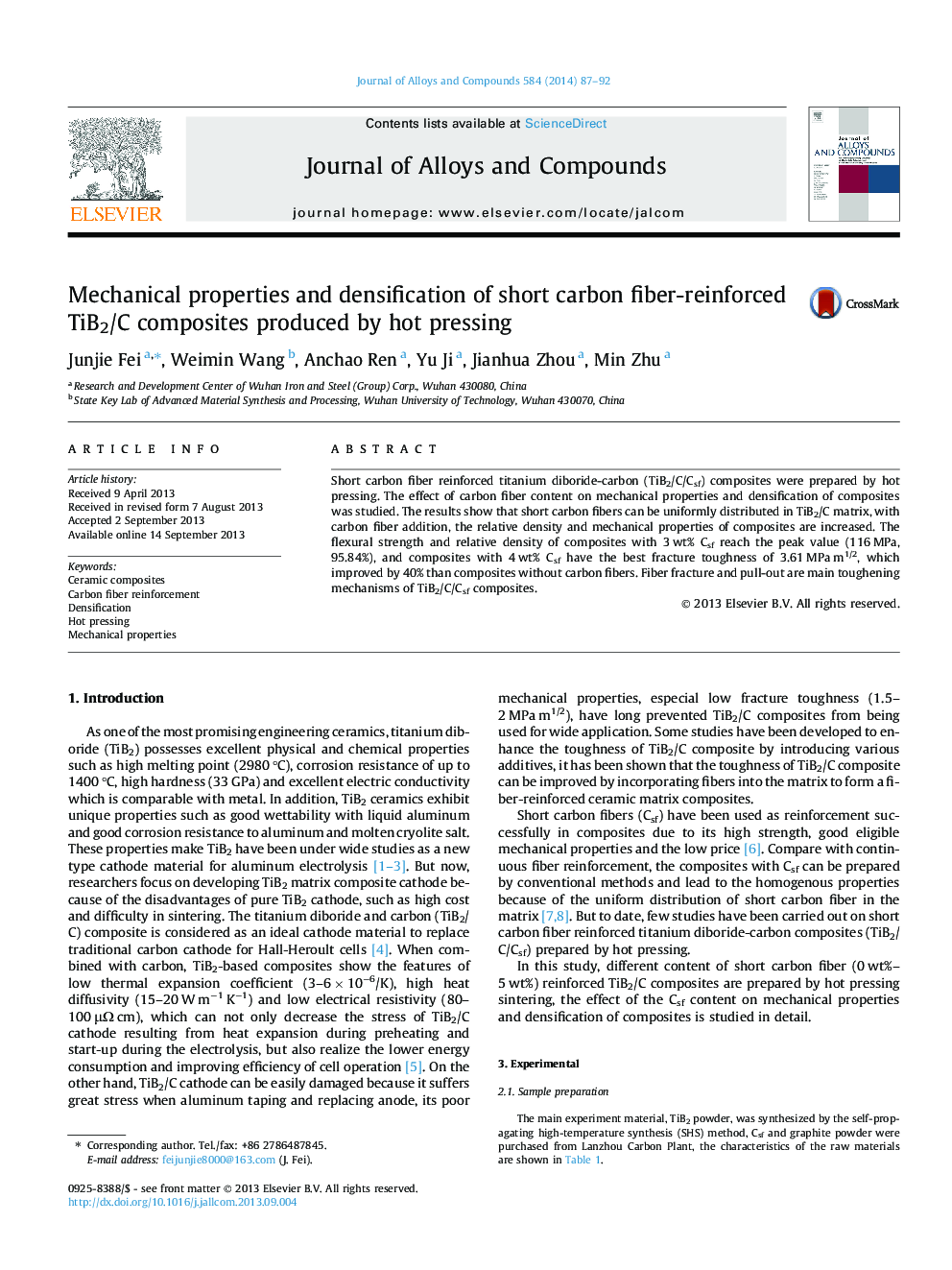| Article ID | Journal | Published Year | Pages | File Type |
|---|---|---|---|---|
| 1612386 | Journal of Alloys and Compounds | 2014 | 6 Pages |
•TiB2/C/Csf composites were prepared by hot pressing sintering.•Increasing short carbon fibers will decrease relative density of composites.•Short carbon fibers have great influence on mechanical properties and densification of TiB2/C/Csf composites.•Fiber fracture and pull-out are main toughening mechanisms of TiB2/C/Csf composites.
Short carbon fiber reinforced titanium diboride-carbon (TiB2/C/Csf) composites were prepared by hot pressing. The effect of carbon fiber content on mechanical properties and densification of composites was studied. The results show that short carbon fibers can be uniformly distributed in TiB2/C matrix, with carbon fiber addition, the relative density and mechanical properties of composites are increased. The flexural strength and relative density of composites with 3 wt% Csf reach the peak value (116 MPa, 95.84%), and composites with 4 wt% Csf have the best fracture toughness of 3.61 MPa m1/2, which improved by 40% than composites without carbon fibers. Fiber fracture and pull-out are main toughening mechanisms of TiB2/C/Csf composites.
Graphical abstractWhen crack spreads in composites, it need to overcome resistance to through grain boundaries in the matrix, and then crack extends along fiber/matrix interface and overcomes the interfacial shear resistance to make the fibers debond, fracture and pull-out. It can be thought that the interfacial shear stress increases with the increase of the crack opening displacement before fibers are pulled out. Once the fibers fracture, the interfacial shear stress decreases accordingly. All of these toughening mechanisms can consume fracture energy and improve the fracture toughness of TiB2/C/Csf composites.Figure optionsDownload full-size imageDownload as PowerPoint slide
